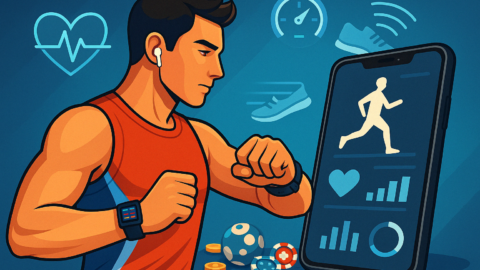Selfie Verification is considered as a quick and accurate identity verification method offering remote accessibility and ease to customers.
On April 12th, 2024, Login.gov, a US governmental platform for benefits and services introduced selfie verification for enhanced digital identification through a pilot program in May. The General Service Administration of the US introduced this program to improve the compliance level of Login.gov to level 2 of Identity Assurance set under the guidelines of NIST (National Institute of Standards and Technology). This IA Level 2 requires compliant firms to implement biometrics or in-person identity verification to protect users against cyber attacks and fraud.

Selfie verification for user onboarding is trending due to the rise in demand for remote work settings and enhanced global communication mechanisms. Especially after the COVID-19 pandemic when the whole world was under lockdown, many industries shifted to remote work settings empowering selfie verification. Let us explore how and why selfie verification has become the favorite of identity assurance service providers.
Selfie Verification Overview
Selfie Verification is a method of identity verification that uses mobile selfie cameras to verify a user’s identity via facial recognition. Two main approaches are used in selfie verification:
- Selfie Document ID Verification requires users to hold their government-issued Identity document in front of the selfie camera alongside their face.
- Upload an ID document separately and then upload a selfie photograph taken from mobile.
Both approaches are necessary under different circumstances and the sensitivity of the use case of selfie verification. Selfie identity verification has enabled users to remotely verify their identities where organizations like banks and FIs can now easily conduct customer onboarding via mobile phone applications.
How Selfie ID Verification Works?
Two main procedures are working in selfie verification i.e.
- Front-End
It is the interface of the facial recognition application that appears in front of the user who is then prompted to upload a valid identity document that has the most updated picture. It also asks the user to prevent any glare effect on the ID document by removing lamination or maintaining the lighting effect.
Then it asks the user to upload a selfie image by fulfilling different requirements such as:
- Maintaining a certain lighting and brightness
- Using a high-resolution selfie camera
- Staying still till the selfie uploads to avoid motion blur
- Back-End
At the back end, the facial recognition application software collects the uploaded data in the form of ID document images and selfie images. It validates the identity through face matching and when certain criteria are met in the face matching process. Also, it checks the elements like liveness check and detects spoofing attempts by using AI. Finally, when the face from photo ID and selfie is matched, the identity of the user is verified.
Benefits of Selfie Verification
Selfie verification is mainly done to reduce the need for on-premises identity verification and facilitate users to seamlessly submit necessary identity information. It also reduces the onboarding time for customers. Here are some major benefits that Selfie Verification provides to the businesses:
- Security of digital identities and user accounts is visibly enhanced when customer onboarding is done via selfie ID verification. This is because facial recognition applications use high-end encryption and other secure data transfer methods to collect user information and use it securely for identity verification.
- Moreover, this helps in identifying suspicious actors and reporting them to the authorities before they can commit fraudulent activity.
- It improves the overall user experience by reducing the need for physical visits and on-premises onboarding. Users can connect to services remotely by verifying their identity through their smartphones in a matter of seconds.
- Trust and reputation of organizations are increased when selfie ID verification ensures user security.
- Regulatory compliance is achieved through the use of remote identity verification improving the existing systems through automation.
Limitations in Selfie Verification
Industry experts raise a questions on the accuracy and robustness of selfie verification due to some reasons. Firstly, they question the element of actual identity ownership for instance if a person forges an identity document and uses his image on a photo ID document, then there’s no such mechanism that can ensure the detection of document spoofing in this case.
Secondly, the element of deepfake attacks is becoming so realistic that it is becoming difficult to detect a deepfake with existing facial recognition algorithms in many cases.
Thirdly, the practice of holding an ID document alongside your face is considered outdated due to the first and second factors. This raises an argument on how the future of selfie verification may be and how efficiently and effectively AI-driven facial recognition can combat deepfake and document forgery.
What Lies Ahead in Selfie Verification?
Selfie Verification is still prevalent and many industries use it as a means of identity verification. It is trending mostly in developing jurisdictions. However, its use case might differ as more sensitive domains use multi-factor authentication including other biometric methods alongside facial recognition, for example, fingerprints and retina scans. Shortly, AI will dominate every digitally operated industry resulting in identity solutions to fully shift on AI.









